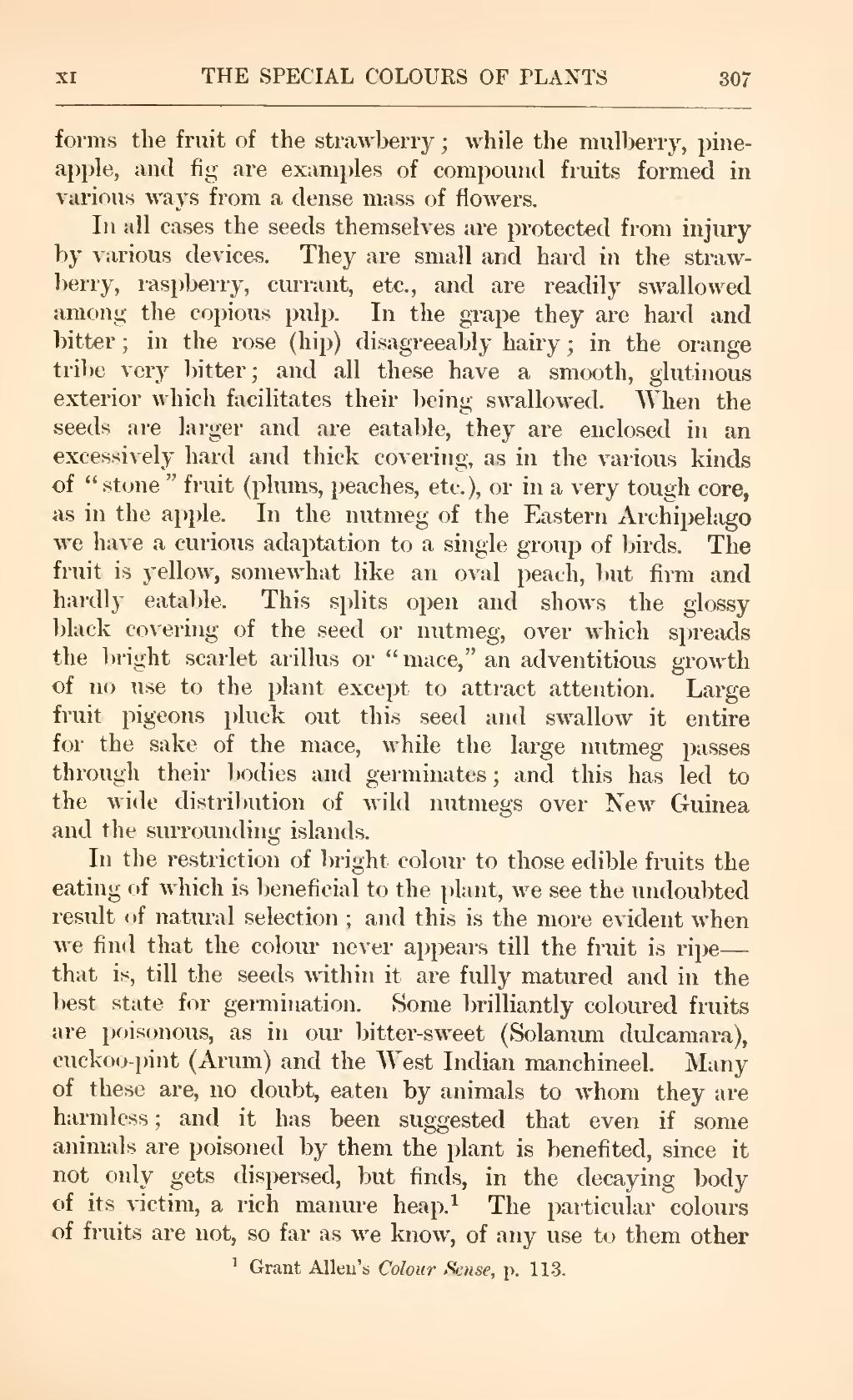forms the fruit of the strawberry; while the mulberry, pineapple, and fig are examples of compound fruits formed in various ways from a dense mass of flowers.
In all cases the seeds themselves are protected from injury by various devices. They are small and hard in the strawberry, raspberry, currant, etc., and are readily swallowed among the copious pulp. In the grape they are hard and bitter; in the rose (hip) disagreeably hairy; in the orange tribe very bitter; and all these have a smooth, glutinous exterior which facilitates their being swallowed. When the seeds are larger and are eatable, they are enclosed in an excessively hard and thick covering, as in the various kinds of "stone" fruit (plums, peaches, etc.), or in a very tough core, as in the apple. In the nutmeg of the Eastern Archipelago we have a curious adaptation to a single group of birds. The fruit is yellow, somewhat like an oval peach, but firm and hardly eatable. This splits open and shows the glossy black covering of the seed or nutmeg, over which spreads the bright scarlet arillus or "mace," an adventitious growth of no use to the plant except to attract attention. Large fruit pigeons pluck out this seed and swallow it entire for the sake of the mace, while the large nutmeg passes through their bodies and germinates; and this has led to the wide distribution of wild nutmegs over New Guinea and the surrounding islands.
In the restriction of bright colour to those edible fruits the eating of which is beneficial to the plant, we see the undoubted result of natural selection; and this is the more evident when we find that the colour never appears till the fruit is ripe—that is, till the seeds within it are fully matured and in the best state for germination. Some brilliantly coloured fruits are poisonous, as in our bitter-sweet (Solanum dulcamara), cuckoo-pint (Arum) and the West Indian manchineel. Many of these are, no doubt, eaten by animals to whom they are harmless; and it has been suggested that even if some animals are poisoned by them the plant is benefited, since it not only gets dispersed, but finds, in the decaying body of its victim, a rich manure heap.[1] The particular colours of fruits are not, so far as we know, of any use to them other
- ↑ Grant Allen's Colour Sense, p. 113.
